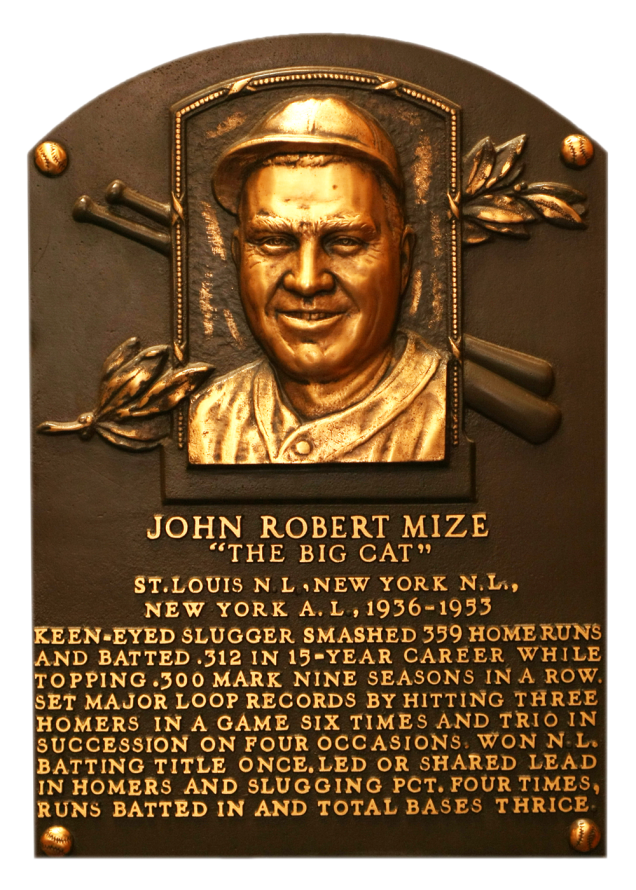
Class of: 1981 (Veterans Committee)
Team: Cardinals
Key Stats: 157 wRC+, 361 HR, .312 AVG
Johnny Mize was one of several players whose careers were shortened due to service in either WWII or Korea. Mize missed 1943-1945 to service, which of course hurt his career totals, and is why he needed to wait nearly 30 years after his retirement for induction into the Hall of Fame. On the one hand, it’s good for the voters of the Hall of Fame to have high standards (with a couple of notably bad recent exceptions) because we don’t want the Hall to be filled with average or very good players instead of the elite ones. On the other hand, service in wartime seems to be one of those unique circumstances when the BBWAA or Veterans Committee could be more lenient with the qualifications due to the context of the era.
Mize, nicknamed “The Big Cat” before Andres Galarraga was born, was one of the more dynamic hitters of the 1930’s and 1940’s. In his first season with the Cardinals, Mize clobbered 19 homers in only 126 games and put up a WAR of 4.3. From then until 1948, Mize would top 5.0 WAR every season, had a wRC+ of at least 155 each season and would routinely hit 25 or more homers. Unlike guys like Harmon Killebrew, Mize was a complete hitter with a .300 or higher batting average most seasons during that run and a .400 or better OBP most years as well.
Mize’s peak was incredible and only interrupted by his service in the War. In the season prior to his deployment, he was worth 5.8 WAR with 26 homers and 110 RBI. In his first season back stateside, Mize was worth 6.0 WAR in only 101 games with 22 homers and 70 RBI. Giving him three more seasons with numbers between those values would result in an extra 70 homers and 85 RBI at least for his career, which would bring him into rarified air for that point in history.
Beginning in 1949, Mize would undergo a slow decline phase. While with the Giants, he was sold to the crosstown Yankees where he would become a well-respected member of the team. After joining the Yankees, Mize would become part of the only team in history to win five consecutive World Series titles despite being used primarily as a pinch hitter for the bulk of his time (which was a stroke of genius on the part of Casey Stengel). Mize had injuries begin to mount up on him during that period so he could no longer play every day. However, Mize still was an above average hitter each year and was a key contributor to the team.
Mize called it a career after the 1953 season. With five championships and ten All-Star selections, Mize seemed a shoo-in for the Hall of Fame. He also finished 6th all-time in homers, was the only player to hit 50 homers and strike out fewer than 50 times in a season, was 30th in WAR (with only 1884 games in his career) and was 9th in wRC+. But Mize was unfortunately a first baseman during the time of Stan Musial (even playing for the same team), and Musial’s career totals would obviously dwarf Mize’s contributions. Not to mention other great hitters who were around in the same time such as Hank Greenberg, Joe DiMaggio and of course Ted Williams. Mize could compete with some of them, especially Greenberg, but he wasn’t necessarily better than them. That caused Mize to go overlooked in the eyes of many voters, and he nearly faded into obscurity.
Mize finally gained induction in 1981 via the Veterans Committee. For whatever reason, this true giant of the game had to wait an insufferably long time to get his due, made equally worse when in the decade prior to his induction the Veterans Committee was making terrible choices constantly. Johnny Mize was one of the best hitters in history, and well deserving of his induction.